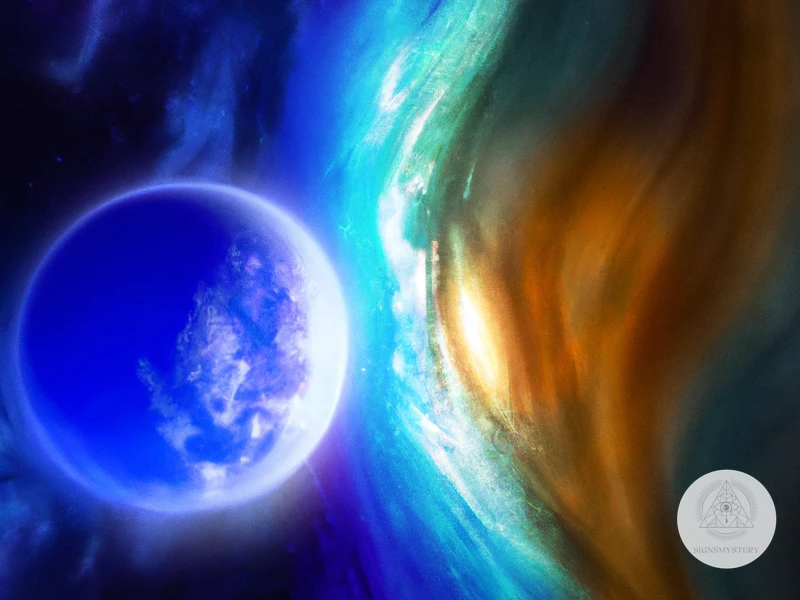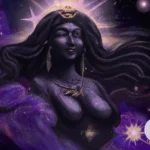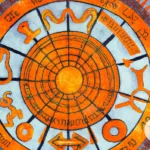The sun and moon have fascinated and intrigued cultures throughout history, serving as powerful symbols in ancient civilizations. These celestial bodies hold deep meaning and significance, representing the cyclical nature of life, the duality of existence, and the balance of masculine and feminine energies. In this article, we will explore the sacred symbols of the sun and moon in various ancient cultures, delving into the rich symbolism found in Egyptian, Aztec, Norse, Greek, Chinese, and Native American beliefs. Join us on this journey as we uncover the hidden truths and mysticism behind these ancient symbols of light and darkness.
The Sun in Ancient Cultures
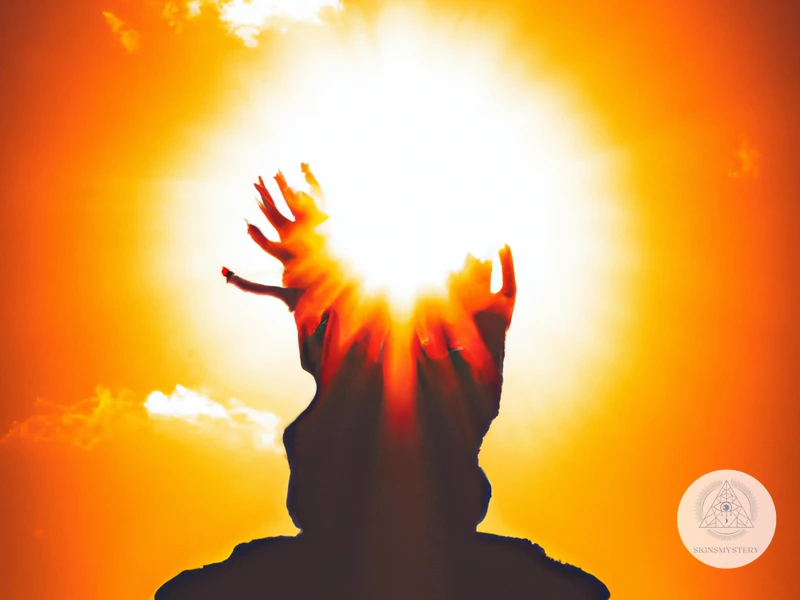
In ancient cultures, the sun held immense importance and played a central role in spiritual beliefs and practices. In Ancient Egypt, the sun was associated with the god Ra, who represented creation, light, and warmth. Ra was often depicted as a hawk-headed figure, with the sun disc encircled by a serpent on his head. The sun in Egyptian mythology symbolized life, resurrection, and the journey of the soul after death. Moving to the Aztec civilization, the sun was worshipped as Huitzilopochtli, the god of the sun and war. The Aztecs believed that their sun god required human sacrifices to ensure the sun’s daily journey across the sky. In Norse mythology, the sun was personified by the goddess Sol, who drove the chariot of the sun across the sky. The sun in Norse culture symbolized warmth, light, and fertility. So, across these diverse cultures, the symbolism of the sun varied, but its significance as a source of life, power, and spiritual energy remained constant.
Sun Symbolism in Ancient Egypt
In Ancient Egypt, the sun held great significance and was deeply intertwined with their spiritual beliefs and practices. The Egyptians saw the sun as a symbol of creation, light, and warmth. The sun god, Ra, was one of the most important deities in Egyptian mythology, representing the power of the sun and its life-giving energy. Ra was often depicted as a hawk-headed figure, with the sun disc encircled by a serpent on his head. This portrayal symbolized the sun’s strength and its ability to ward off evil and protect the pharaoh. Additionally, the journey of the sun across the sky represented the journey of the soul after death. The sun’s rising in the morning was associated with birth and rebirth, while its setting in the evening symbolized death and the afterlife. The Egyptians believed that the sun was essential for the sustenance of life and the fertility of the land. They worshipped the sun and offered prayers and rituals to ensure its continued presence. The sun’s symbolism and importance in Egyptian culture served as a reminder of the power and divinity of nature. To explore more about the spiritual practices and the importance of symbolism in ancient cultures, you may want to delve into the world of meditation techniques or the significance of the lion spirit animal in African cultures.
Sun Symbolism in Ancient Aztec Civilization
The Aztec civilization, known for its complex religious beliefs and rituals, held the sun in great reverence. The sun, known as Huitzilopochtli, was considered a vital deity and played a crucial role in Aztec mythology. The Aztecs believed that the sun was engaged in a constant battle against the forces of darkness, and its successful journey across the sky every day ensured the continuation of life on Earth. Huitzilopochtli was depicted as a fierce warrior adorned with hummingbird feathers and carrying a serpent-shaped weapon. The Aztecs believed that human sacrifices were necessary to sustain the sun’s energy and prevent the world from descending into darkness. These sacrifices, often performed during grand ceremonies, were seen as an offering to ensure the sun’s strength and vitality. The symbolism of the sun in Aztec culture extended beyond its role in sustaining life. It also represented power, leadership, and the divine right to rule. The Aztec ruler, known as the Huey Tlatoani, was seen as the earthly representative of the sun god himself. This elevated the sun to a position of supreme importance in Aztec society, with the ruler embodying the qualities associated with the sun, such as bravery, strength, and wisdom. The Aztecs’ deep reverence for the sun shaped their daily lives, religious practices, and social structure. The understanding of the sun’s symbolism in Aztec civilization gives us a glimpse into the intricate belief system that guided their culture and laid the foundation for their spiritual rituals. (Link: exploring-guided-visualization-meditation-with-spirit-animals)
Sun Symbolism in Ancient Norse Mythology
In Norse mythology, the symbolism of the sun held great importance and was closely associated with the goddess Sol. Sol, as the personification of the sun, was believed to drive a chariot across the sky, pulling the sun behind her. This daily journey of the sun was seen as a constant cycle of light and darkness, representing the eternal dance between day and night. The sun symbolized warmth, light, and fertility in Norse culture, and it was believed to have a direct impact on the growth of crops and the well-being of the natural world. The sun’s rays were seen as a source of divine energy, infusing life and vitality into all living things. Additionally, the sun held significance in terms of navigation and exploration for the seafaring Norse people. They relied on the position of the sun in the sky to determine direction and to aid in their journeys across vast oceans. The sun’s presence in Norse mythology also intersected with various other gods and goddesses, forming connections with the realms of Asgard and Midgard. The sun’s symbolism in ancient Norse mythology showcased its power and importance as a guiding force in both the physical and spiritual realms of the Norse belief system.
The Moon in Ancient Cultures
The moon, like the sun, held great reverence and symbolism in ancient cultures. In Ancient Greek mythology, the moon was personified as the goddess Selene, known for her ethereal beauty. Selene was associated with the phases of the moon and represented feminine energy, intuition, and sensibility. Moving to Ancient China, the moon represented Yin, the feminine principle, in the concept of Yin and Yang. The moon was seen as a symbol of tranquility, enlightenment, and the cyclical nature of life. In Ancient Native American beliefs, the moon was considered a powerful spirit guide and symbolized feminine energy, intuition, and the connection between humans and the natural world. Native American tribes often referred to the moon as Grandmother Moon, honoring its nurturing and guiding qualities. Thus, across different ancient cultures, the moon held diverse yet significant symbolism, embodying the essence of femininity, intuition, and interconnectedness with the spiritual realm.
Moon Symbolism in Ancient Greek Mythology
In Ancient Greek mythology, the moon held a significant place and was closely associated with the goddess Artemis. Artemis, often depicted as a young woman carrying a bow and arrow, represented the moon and was the goddess of the hunt, wilderness, and childbirth. The moon symbolized Artemis’s power and divinity, serving as her celestial counterpart. The Greeks believed that Artemis guided and protected women during childbirth, and they would pray to her for safe labor and delivery. Additionally, the moon was also associated with the cycle of life and death. In Greek mythology, the moon went through phases, waxing and waning, symbolizing the ever-changing nature of existence. The new moon represented the beginning or birth, while the full moon represented the peak of life and vitality. Conversely, the waning moon represented decline and death. The Greeks believed that the moon influenced the tides and had an impact on human emotions and behavior, adding to its mystical significance. The moon’s symbolism in Ancient Greek mythology showcases its role as a powerful feminine force, deeply connected to nature, fertility, and the continuous cycle of life.
Moon Symbolism in Ancient Chinese Culture
In ancient Chinese culture, the moon held great significance and was considered a powerful symbol. The moon was associated with the concept of yin energy, representing femininity, darkness, and introspection. It was believed to have a profound influence on the natural world and the lives of individuals. Here are some key aspects of moon symbolism in ancient Chinese culture:
1. Yin and Yang: The moon was seen as the complementary counterpart to the sun, representing the yin energy while the sun represented the yang energy. The balance and harmony between these two forces were crucial in Chinese philosophy and cosmology.
2. Lunar Calendar: The Chinese lunar calendar, also known as the Yin calendar, was based on the cycles of the moon. It played a vital role in determining auspicious dates for various events, such as festivals, ceremonies, and agricultural activities.
3. Moon Goddess Chang’e: One of the most prominent figures in Chinese lunar mythology is Chang’e, the Moon Goddess. According to legends, Chang’e consumed the elixir of immortality and ascended to the moon, becoming the lunar deity. She is often depicted with a rabbit, symbolizing longevity and fertility.
4. Mid-Autumn Festival: The Mid-Autumn Festival, also known as the Moon Festival, is a significant celebration in Chinese culture. It takes place on the 15th day of the eighth lunar month, when the moon is believed to be at its fullest and brightest. Families gather to admire the moon, eat mooncakes, and offer prayers for a bountiful harvest and family reunion. The festival symbolizes unity, harmony, and the appreciation of the moon’s beauty.
5. Moon and Water: In Chinese poetry and literature, the moon is often associated with water elements, such as rivers, lakes, and oceans. This connection reflects the belief that the moon’s gravitational pull influences tides and the flow of emotions in human beings.
6. Mooncakes: Mooncakes are traditional Chinese pastries enjoyed during the Mid-Autumn Festival. These round, sweet treats often contain various fillings like lotus seed paste or red bean paste and are intricately decorated with patterns and symbols, including the moon and flowers. Mooncakes symbolize unity, blessings, and the wish for a prosperous future.
In ancient Chinese culture, the moon held deep symbolic meaning, representing yin energy, harmony, and celestial influences. Its influence can still be seen today in the customs, festivals, and traditions that revolve around lunar symbolism.
Moon Symbolism in Ancient Native American Beliefs
Moon Symbolism in Ancient Native American Beliefs can be traced back to various tribes and cultures across North America, each with their unique interpretations and significance attached to the moon. The Native Americans observed the moon’s phases closely and developed a deep spiritual connection with its cycles. The moon was often seen as a guiding light, offering navigation and direction during night travels. Many tribes believed that the moon had the power to influence various aspects of life, such as agricultural cycles, tides, and even human behavior. In Native American folklore, the moon was associated with fertility, transformation, and the feminine energy. It was often depicted as a nurturing mother figure, providing guidance and protection to the tribe. The full moon was particularly revered, as it was believed to intensify spiritual energies and provide a powerful opportunity for rituals and ceremonies. Some Native American tribes also associated specific qualities and animals with each lunar cycle, recognizing the moon’s influence on nature and the animal kingdom. The moon held a significant role in Native American beliefs, symbolizing harmony, intuition, and the interconnectedness of all living beings.
Shared Symbolism of the Sun and Moon
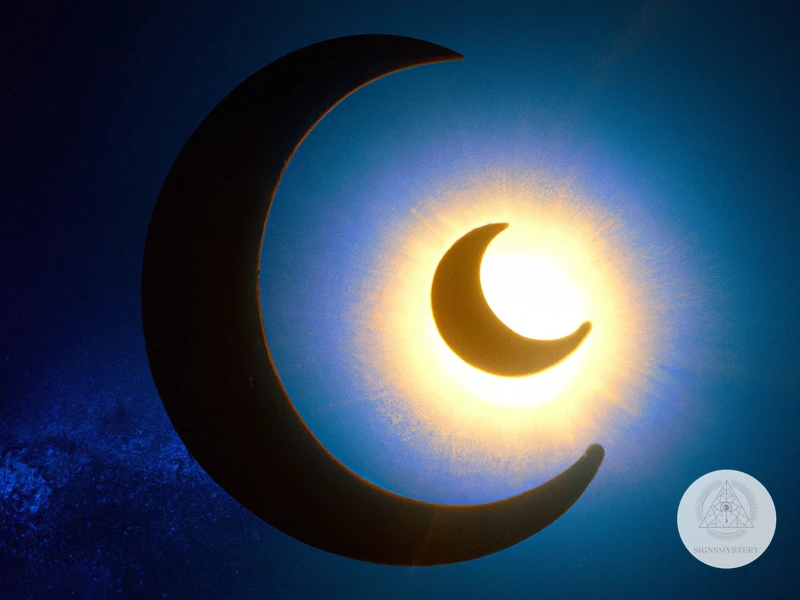
The sun and moon, while representing distinct celestial bodies, often shared symbolic meanings across ancient cultures. One shared symbolism is the concept of the duality of the sun and moon. In many belief systems, the sun is associated with masculine energy, representing strength, power, and active force, while the moon embodies feminine energy, symbolizing intuition, nurturing, and receptivity. This duality emphasizes the complementary nature of these celestial bodies, highlighting the balance and harmony necessary for existence. Additionally, both the sun and moon held significance in the cycle of life and death. The sun was often connected to life and vitality, while the moon represented the realm of the dead and the afterlife. Together, they captured the eternal cycle of creation, preservation, and destruction. Lastly, the shared symbolism of the sun and moon encompasses the divine masculine and feminine energies within the universe, reflecting the interconnectedness of all aspects of existence.
Dualistic Nature of the Sun and Moon
The dualistic nature of the sun and moon is a recurring theme in ancient cultures, representing contrasting elements that coexist in harmony. In many belief systems, the sun is associated with masculine energies, while the moon embodies feminine energies. This duality is often linked to the concept of light and darkness, day and night, and the cycle of life and death. In ancient Egyptian mythology, the sun god Ra represented the active, assertive, and life-giving aspects, while the moon god Thoth symbolized wisdom, intuition, and receptivity. Similarly, in Greek mythology, Apollo, the sun god, represented rationality, logic, and order, while Artemis, the moon goddess, exemplified intuition, emotions, and the mystical. This duality is also reflected in Chinese culture, where the sun is associated with the Yang energy, representing masculinity, warmth, and expansion, while the moon embodies the Yin energy, symbolizing femininity, coolness, and contraction. In Native American beliefs, the sun and moon are often perceived as complementary forces, representing the balance of male and female aspects within nature and the universe. This dualistic perspective allows for the recognition and appreciation of the interconnectedness and interdependence of opposing forces, highlighting the importance of embracing both light and darkness, strength and vulnerability, and action and introspection in our lives.
| Sun | Moon |
|---|---|
| Rationality | Intuition |
| Order | Mystical |
| Masculine energy | Feminine energy |
| Warmth | Coolness |
| Expansion | Contraction |
Life and Death Significance in Ancient Cultures
In ancient cultures, the symbolism of life and death was intricately linked to the movement of the sun and moon. These celestial bodies represented the cycle of life and the eternal passage between existence and the afterlife. In Egyptian mythology, the sun, associated with the god Ra, was believed to die each day as it set and be reborn each morning as it rose. This continuous cycle of death and rebirth mirrored the journey of the soul through the realms of the living and the dead. The Aztecs, too, placed great significance on the sun’s role in the cycle of life and death. They believed that the sun god, Huitzilopochtli, required sacrifices to ensure the sun’s continued journey across the sky and the well-being of their civilization. Similarly, in Norse mythology, the sun’s movement symbolized the cycle of life, with the sun’s daily journey representing birth, life, and death. The sun’s disappearance during the night, followed
Subscribe to Our Newsletter
Sign up to receive the latest news and updates.
Divine Masculine and Feminine Energies
In ancient cultures, the symbolism of the sun and moon often represented the divine masculine and feminine energies. The sun, with its fiery and radiant nature, was associated with the masculine energy, symbolizing strength, power, and assertiveness. It was often linked to gods such as Ra in Egypt or Huitzilopochtli in Aztec mythology, who personified these qualities. The sun’s nurturing and life-giving properties also connected it to the divine feminine energy, epitomizing the concept of motherhood and fertility. On the other hand, the moon, with its gentle and reflective qualities, represented the feminine energy. In Greek mythology, the moon was associated with the goddess Artemis, embodying intuition, mystery, and the cycles of life. In Chinese culture, the moon represented Yin, the feminine principle that encompassed darkness, receptivity, and nurturing. Native American beliefs often viewed the moon as a symbol of femininity and the Great Mother, representing emotions, intuition, and the mysterious realms of the subconscious. The interconnectedness of the sun and moon as embodiments of masculine and feminine energies emphasized the harmony and balance that existed in the universe. It reflected the complementary nature of these energies, highlighting the importance of embracing both aspects within oneself and in the world around.
Conclusion
In conclusion, the exploration of the sacred symbols of the sun and moon in ancient cultures reveals the deep connection between humanity and the celestial bodies. These symbols served as a way for ancient civilizations to understand and make sense of the world around them, as well as for expressing their spiritual beliefs and ideologies.
Throughout the different cultures, we have seen that the sun and moon represented more than just astronomical objects. They embodied complex concepts such as life and death, the balance of opposites, and the divine masculine and feminine energies. These symbols were not only revered but were also worshipped and held sacred in rituals and ceremonies.
The sun and moon acted as guides, shaping the mythologies and belief systems of ancient civilizations. They provided a sense of hope, renewal, and connection to something greater than themselves. The shared symbolism of the sun and moon across cultures is a testament to the universal nature of these celestial bodies and their profound impact on human consciousness.
As we continue to explore the mysteries of the sun and moon in ancient cultures, we gain a deeper appreciation for the wisdom and spirituality of our ancestors. Their understanding and reverence for these symbols remind us of the interconnectedness of all things and the eternal cycles of life.
In our modern world, the symbolic significance of the sun and moon continues to resonate, reminding us to seek balance, embrace transformation, and honor the divine within ourselves and the world around us. So, let us look to the sun and moon as a source of inspiration and guidance, connecting us to the awe-inspiring mysteries of the universe.
Overall, the exploration of the sacred symbols of the sun and moon in ancient cultures unveils a tapestry of beliefs, stories, and meanings that have shaped the human experience, both then and now. These symbols remind us of our shared humanity and the enduring power of the natural world.
Frequently Asked Questions
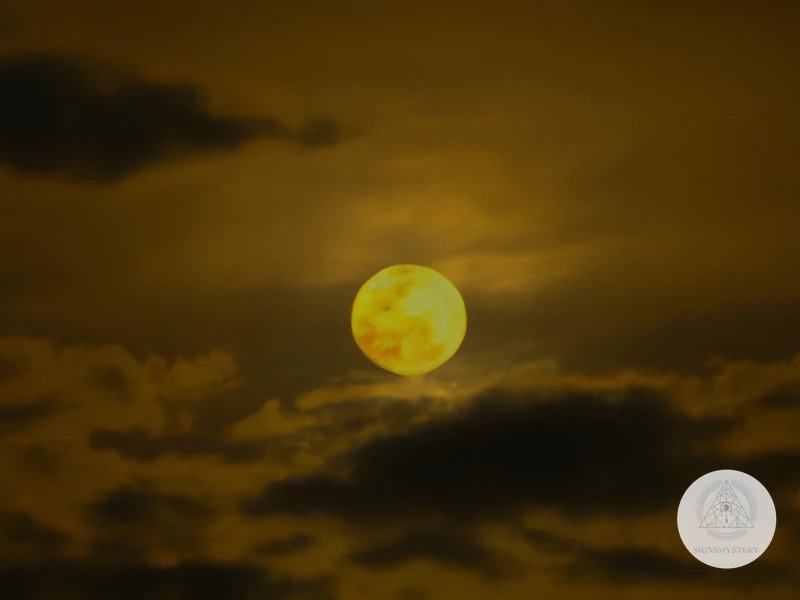
What is the symbolic significance of the sun in ancient cultures?
The sun held symbolic significance in ancient cultures, representing life, vitality, creation, and divine power. It was often associated with gods and goddesses, and its presence was seen as essential for the sustenance of life on Earth.
Why was the sun worshipped in Egyptian mythology?
In Egyptian mythology, the sun was worshipped because it was believed to be the source of life and represented the journey of the soul after death. The god Ra, associated with the sun, was considered the creator and the giver of light and warmth.
How did the Aztecs view the sun?
The Aztecs viewed the sun as a powerful and warlike deity named Huitzilopochtli. They believed that human sacrifices were necessary to sustain the sun and ensure its daily path across the sky.
What celestial figure represented the sun in Norse mythology?
In Norse mythology, the sun was represented by the goddess Sol. It was believed that she drove a chariot across the sky, providing warmth, light, and fertility to the world below.
What role did the moon play in ancient Greek mythology?
In ancient Greek mythology, the moon was associated with the goddess Artemis, who was the twin sister of Apollo, the sun god. Artemis represented the hunt, the wild, and female power.
How did the Chinese view the moon in their culture?
The Chinese culture viewed the moon as a symbol of yin energy, representing femininity, intuition, and cycles. The Mid-Autumn Festival, also known as the Moon Festival, is still celebrated in China to honor the moon’s beauty and influence.
What significance did the moon hold in Native American beliefs?
The moon held great significance in Native American beliefs, often associated with cycles, feminine energy, and fertility. It was honored through rituals and ceremonies, acknowledging its connection to nature and the balance of life.
How do the sun and moon share symbolism in ancient cultures?
The sun and moon share symbolism in ancient cultures in several ways. They represent the dualistic nature of existence, the balance between light and darkness, and the cyclical patterns of life and death. They also embody the masculine and feminine energies, with the sun symbolizing the divine masculine and the moon symbolizing the divine feminine.
What did the sun and moon symbolize in terms of life and death?
In ancient cultures, the sun and moon symbolized the cycle of life and death. The sun represented birth, life, and resurrection, while the moon represented the underworld, the realm of the dead, and the journey of the soul after death.
What is the significance of the sun and moon as divine masculine and feminine energies?
The sun is often associated with divine masculine energy, representing strength, power, and active qualities. In contrast, the moon embodies divine feminine energy, representing intuition, emotions, and receptive qualities. Together, they symbolize the harmony and balance of these opposing energies.
References
- Unraveling the Symbolism of Sun, Moon, and Star Motifs
- Exploring the Early Americas The Heavens and Time
- Sacred Symbols
Frequently Asked Questions

What is the significance of the Sun in ancient cultures?
The Sun held immense significance in ancient cultures as a symbol of power, vitality, and renewal. It was often seen as a representation of the divine and was associated with various gods and goddesses.
Why was the Sun revered in Ancient Egypt?
In Ancient Egypt, the Sun was revered as the god Ra, the creator and ruler of the universe. Ra was believed to give life to everything on Earth, and his daily journey across the sky symbolized the cycle of life and death.
How did the Aztecs view the Sun?
The Aztecs viewed the Sun as a powerful deity called Huitzilopochtli. He was considered the patron of the Aztec people and was associated with war, sacrifice, and the sun’s life-giving energy. The Aztecs believed that offering human sacrifices to Huitzilopochtli would ensure the Sun’s continued rise and provide prosperity for their civilization.
What role did the Sun play in Norse mythology?
In Norse mythology, the Sun was personified as the goddess Sol. She was believed to drive the Sun across the sky in a chariot, while her brother Mani drove the Moon. The Sun held a pivotal role in Norse cosmology, marking the division between the realm of the gods and the realms of humans and giants.
How was the Moon revered in Ancient Greece?
In Ancient Greece, the Moon was revered as the goddess Artemis, the twin sister of Apollo. Artemis was associated with the wilderness, hunting, and the cycles of the moon. She was believed to bring fertility, protect women, and influence the tides.
What was the significance of the Moon in ancient Chinese culture?
The Moon had great significance in ancient Chinese culture and was associated with the yin energy, representing femininity and tranquility. The Chinese believed that the Moon controlled the flow of time and the seasons, influencing agriculture and human emotions.
How did Native American cultures perceive the Moon?
Native American cultures had diverse beliefs about the Moon, but many saw it as a symbol of feminine energy and intuition. The Moon’s phases were seen as a reflection of the cycle of life and were closely connected to agricultural practices, spirituality, and the tracking of time.
What is the shared symbolism of the Sun and Moon?
The Sun and Moon share symbolism as celestial bodies representing duality and balance. They often symbolize the opposing forces of day and night, light and darkness, and life and death. This dualistic nature is seen in many ancient cultures’ cosmologies and religious beliefs.
Why were the Sun and Moon associated with life and death in ancient cultures?
The Sun and Moon were associated with life and death in ancient cultures due to their cyclical nature. The rising of the Sun represented the birth of a new day and the renewal of life, while the setting of the Sun symbolized death and the journey to the afterlife. Similarly, the Moon’s changing phases were often linked to the cycle of life, death, and rebirth.
How did ancient cultures perceive the masculine and feminine energies of the Sun and Moon?
Ancient cultures often associated the Sun with masculine energy and the Moon with feminine energy. The Sun was seen as a symbol of strength, power, and assertiveness, while the Moon represented intuition, receptiveness, and nurturing. The balance of these divine masculine and feminine energies was considered essential for the harmony of the universe.
References
- What Does The Sun And Moon Symbolize In Art?
- The Symbolism of the Sun and Moon in The Rime of the
- Exploring the Early Americas The Heavens and Time

